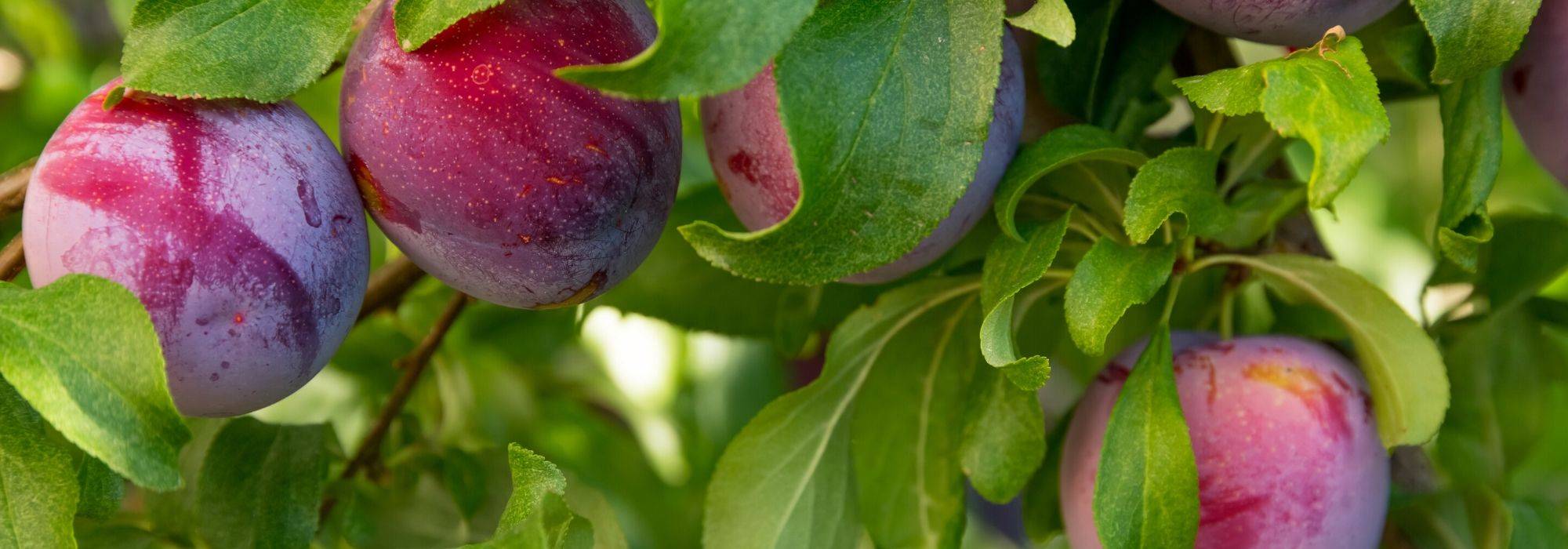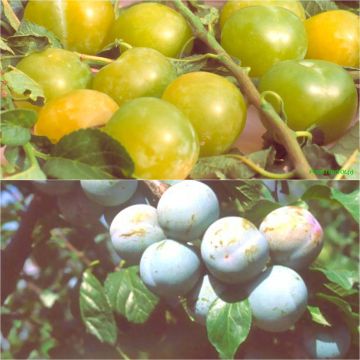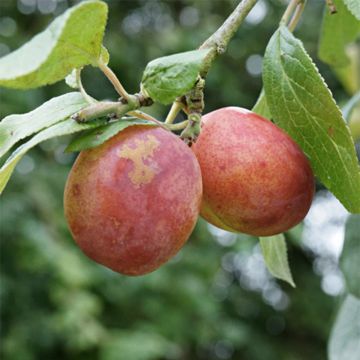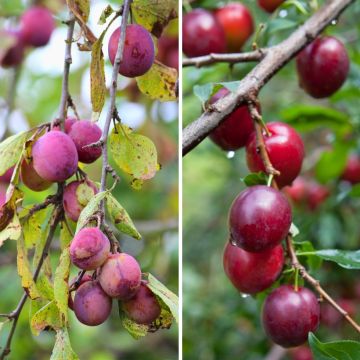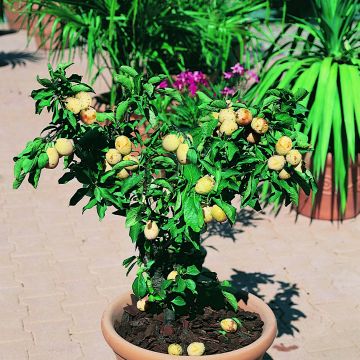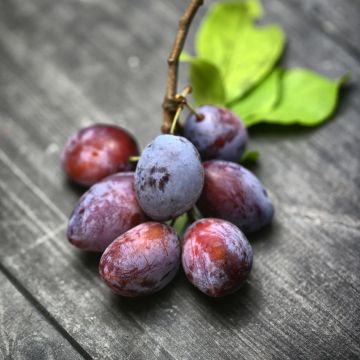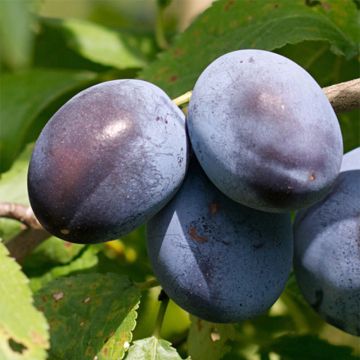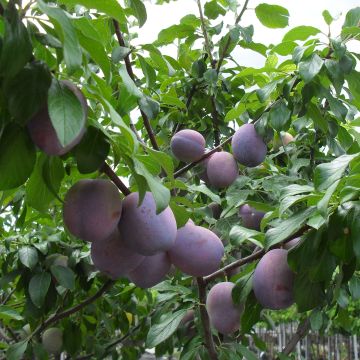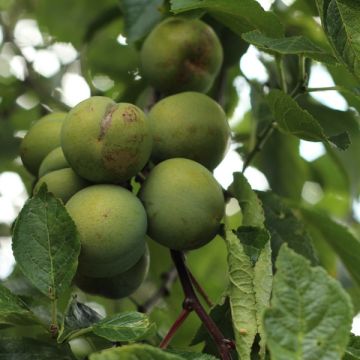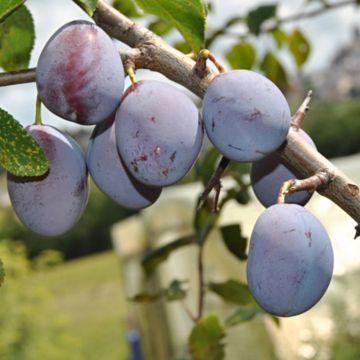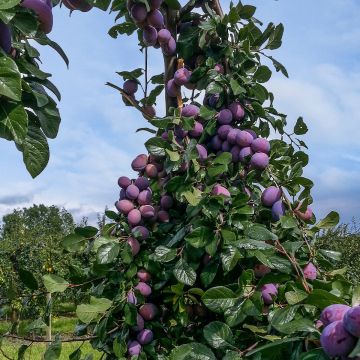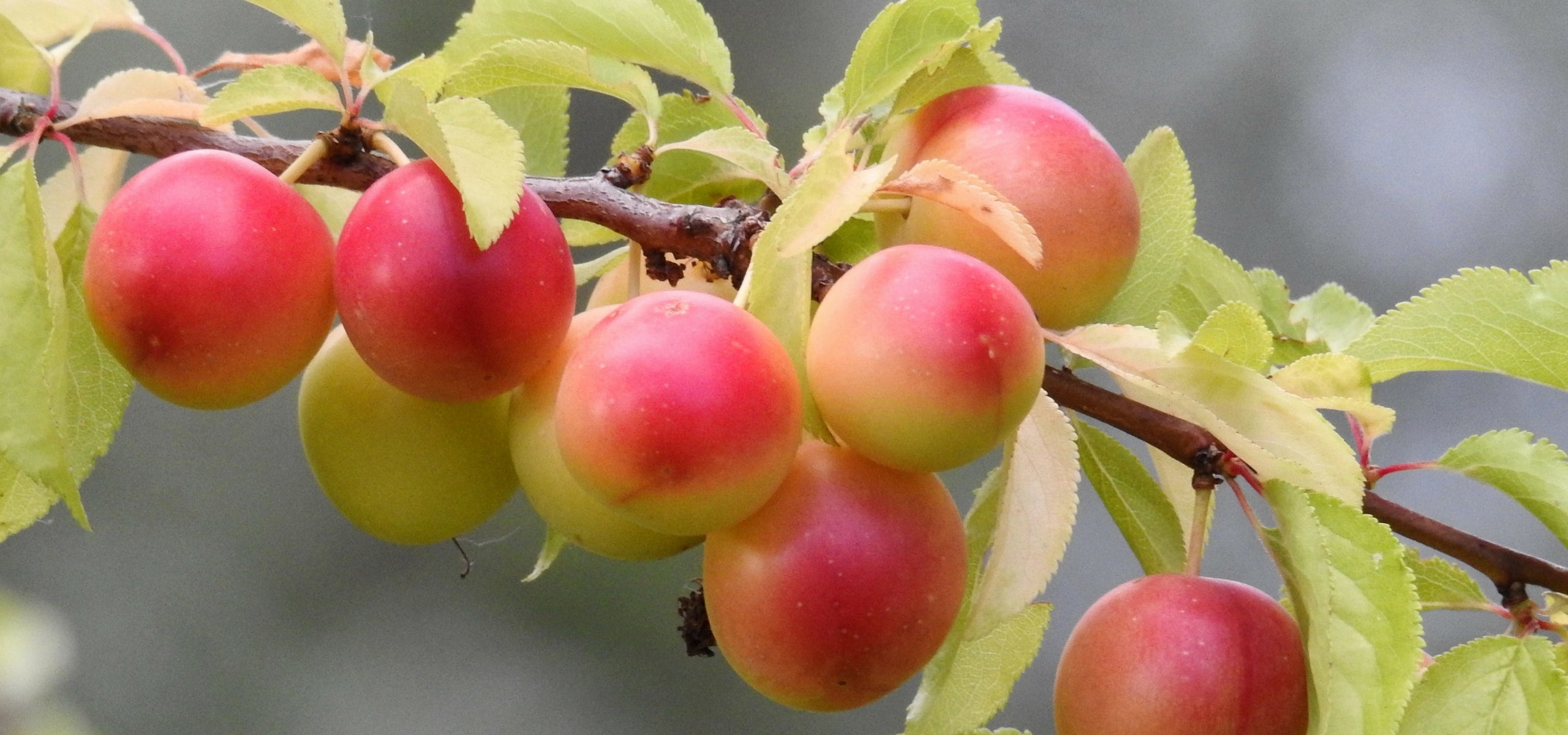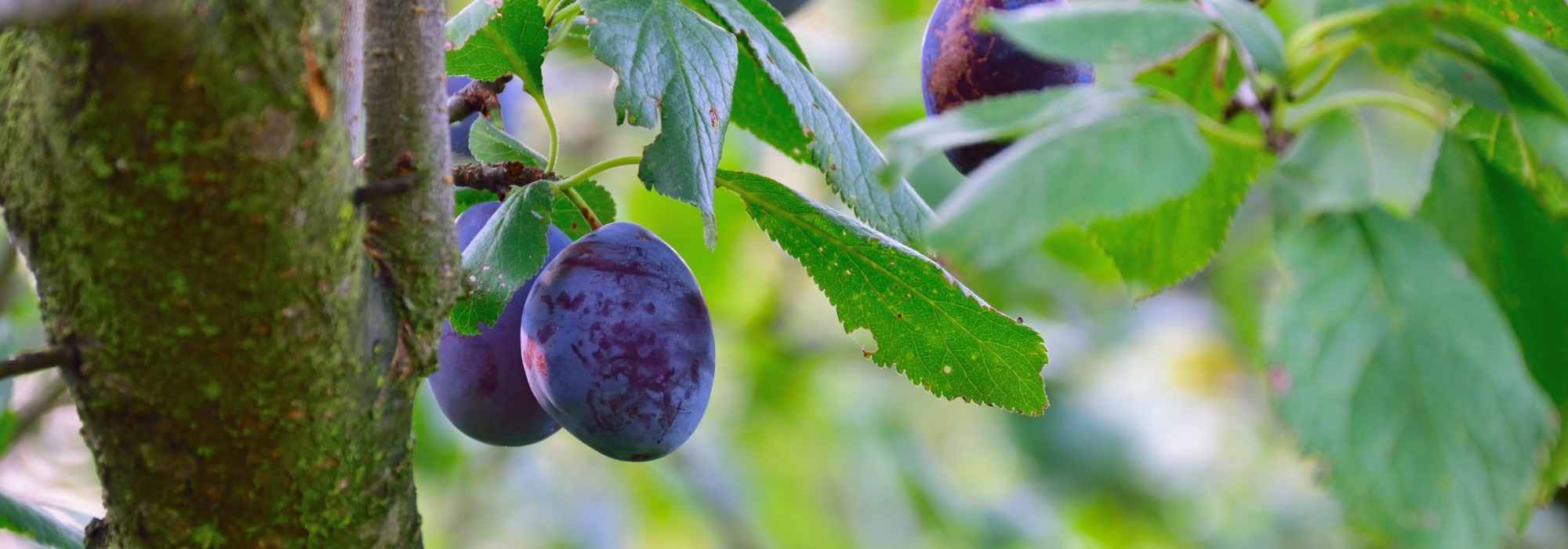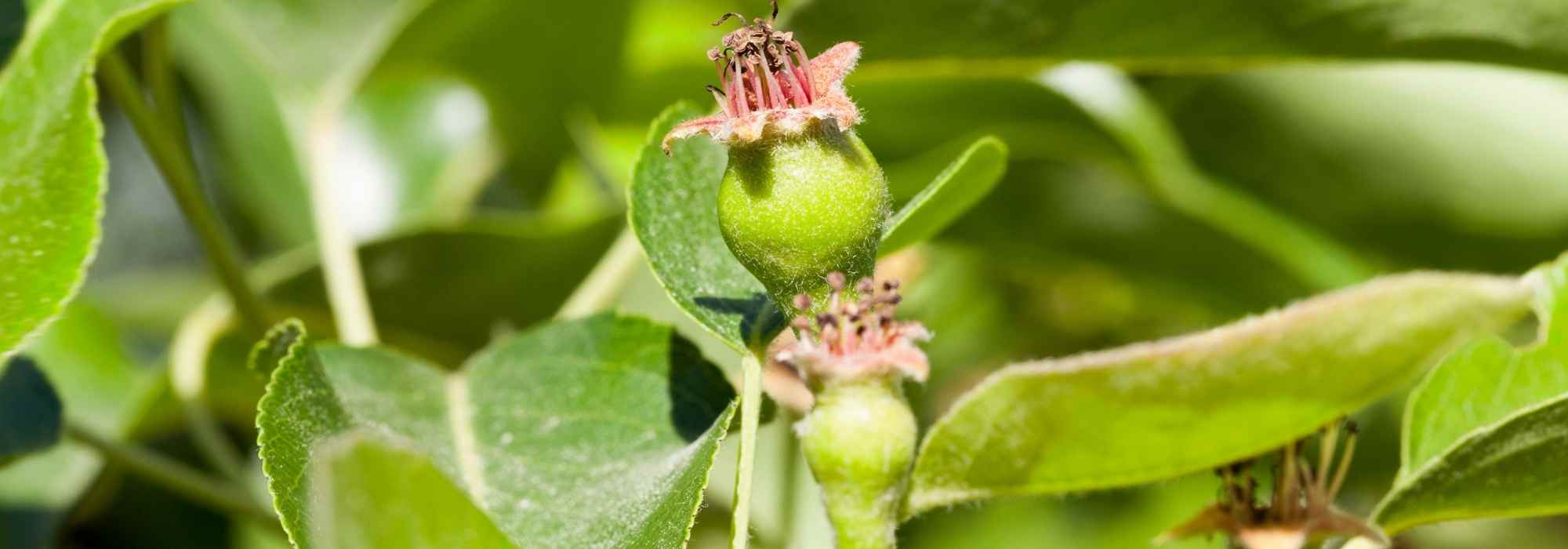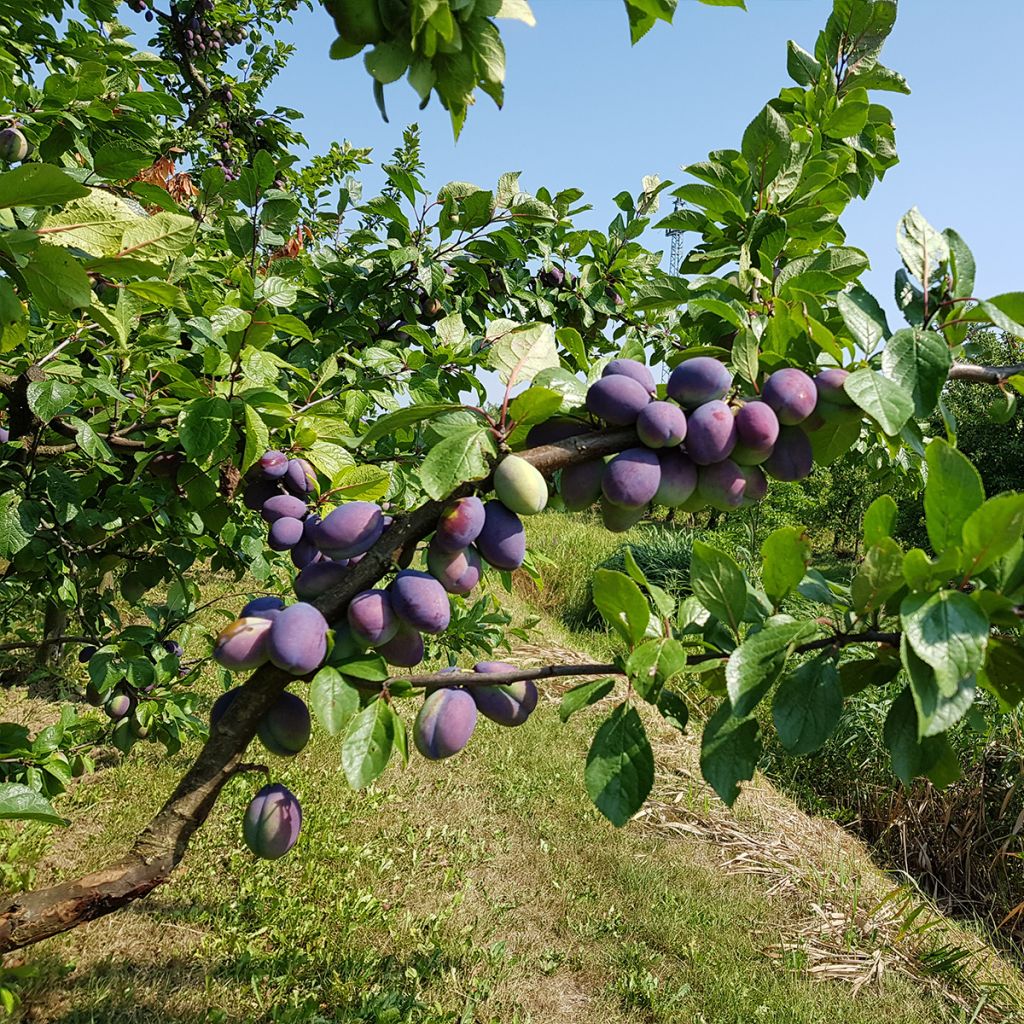

Prunus domestica Belle de Louvain - Common plum
Prunus domestica Belle de Louvain - Common plum
Prunus domestica Belle de Louvain
European plum, Common plum, Garden plum
Special offer!
Receive a €20 voucher for any order over €90 (excluding delivery costs, credit notes, and plastic-free options)!
1- Add your favorite plants to your cart.
2- Once you have reached €90, confirm your order (you can even choose the delivery date!).
3- As soon as your order is shipped, you will receive an email containing your voucher code, valid for 3 months (90 days).
Your voucher is unique and can only be used once, for any order with a minimum value of €20, excluding delivery costs.
Can be combined with other current offers, non-divisible and non-refundable.
Home or relay delivery (depending on size and destination)
Schedule delivery date,
and select date in basket
This plant carries a 6 months recovery warranty
More information
We guarantee the quality of our plants for a full growing cycle, and will replace at our expense any plant that fails to recover under normal climatic and planting conditions.
Description
The Prunus domestica 'Belle de Louvain' is an old variety of plum tree, quite vigorous, with late flowering, less exposed to late spring frosts, and well adapted to cold climates, especially since it is very hardy. Highly fertile, with regular production, this variety is not very susceptible to diseases. It produces large, elongated, dark reddish-purple plums in August with juicy and relatively firm flesh. They are best eaten fresh and are perfect for making desserts or jams. It is a self-fertile variety, but pollination will be better if you plant another variety nearby.
Plum trees belong to the extensive Rosaceae family, which includes most of our temperate fruit trees (Apple trees, Pear trees, Apricot trees, Peach trees, Cherry trees, Quince trees...) as well as small fruits (Blackberries, Raspberry bushes, Strawberry plants). The Prunus genus is huge, with over 300 species, both fruit-bearing (Almond trees, Peach trees...) and ornamental. The Prunus domestica is probably native to Asia Minor (Syria) and would have been introduced to Rome and many other species due to Roman conquests. According to some authors, its introduction to Europe may be more closely linked to the Crusades, but no one really knows for sure.
Belle de Louvain is a widely grown variety in Belgium, mainly because it is an excellent pollinator for other varieties. It is self-fertile, but cross-pollination with another variety, such as Opal or Stanley, will be beneficial. This Plum tree is quite vigorous and forms a small spreading tree, 4 to 5 m (13 to 16ft) tall and about 4 m (13ft) wide. This variety is characterised by late flowering, usually in April or May. It then bears clusters of simple white flowers with five petals attracting bees. Once pollinated, the flowers develop into drupes, fleshy stone fruits commonly known as plums. Those of Belle de Louvain ripen around mid-August and can be harvested then. The yellowish-green flesh is firm and juicy, with a slight fragrance and pleasantly sweet taste. These fruits are best eaten fresh after harvest and are well-suited for making jams. Plums are refreshing fruits that are relatively low in calories and rich in vitamin E.
Hardy down to -23°C or even lower, this variety grows in full sun in ordinary, well-drained, neutral to slightly alkaline soil that is not too dry. Once well-established, it is an easy-to-cultivate tree that is not very demanding.
This Belle de Louvain Plum tree is well adapted to eastern regions, where it can be accompanied by the Mirabelle de Nancy, which thrives under the same continental climate and soil conditions. Pair it with an apple tree to enjoy fruits throughout autumn and a pear tree like the Beurré Hardy, which produces from September to October and takes over from Belle de Louvain. In milder climates, you can diversify your orchard with a Persimmon tree (Diospyros kaki), such as the Costata variety, which will delight you with its vitamin-rich orange fruits.
Prunus domestica Belle de Louvain - Common plum in pictures
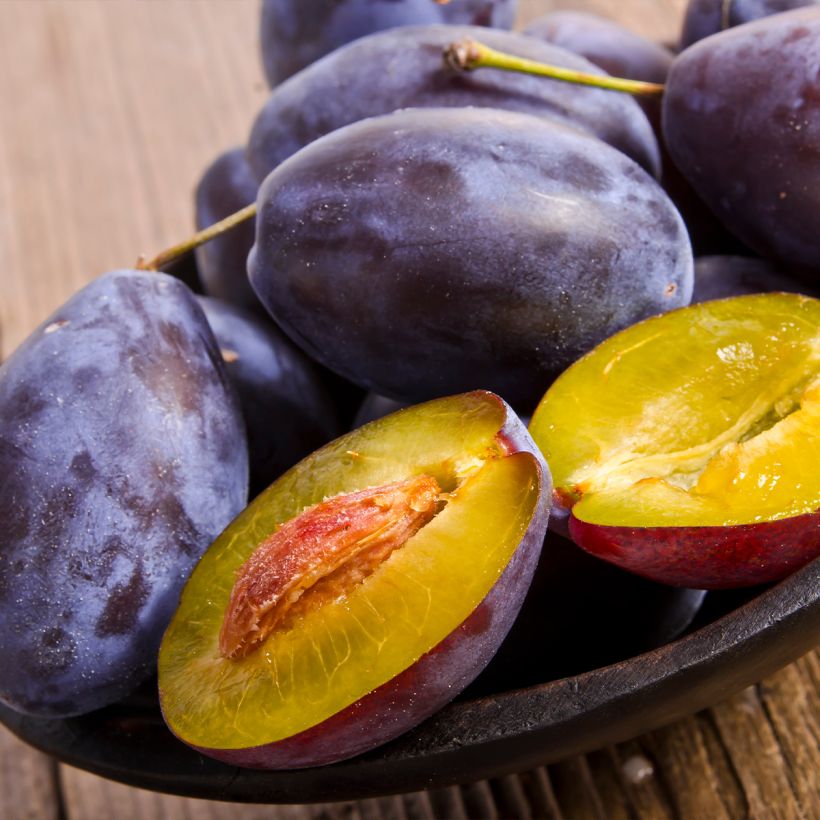

Plant habit
Fruit
Flowering
Foliage
Botanical data
Prunus
domestica
Belle de Louvain
Rosaceae
European plum, Common plum, Garden plum
Cultivar or hybrid
Other Plum Trees
View all →Planting and care
This 'Belle de Louvain' Plum tree prefers deep clay-limestone soil, not too dry. It can adapt to other types of soil, however, it is quite demanding in terms of sunlight. Very hardy (up to approximately -23°C (-9.4°F), or even lower), it appreciates continental climates with distinct seasons. Therefore, it is well suited to eastern regions or low mountain areas, as its late flowering is less likely to freeze in spring.
Dig a planting hole at least 50 cm (20in) in all directions and even more, as this tree likes deep soils. It also appreciates some humidity, so make sure to water it regularly in summer and autumn during the first few years. Once well rooted, it is a resilient and low-maintenance tree.
Planting period
Intended location
Care
Planting & care advice
This item has not been reviewed yet - be the first to leave a review about it.
Haven't found what you were looking for?
Hardiness is the lowest winter temperature a plant can endure without suffering serious damage or even dying. However, hardiness is affected by location (a sheltered area, such as a patio), protection (winter cover) and soil type (hardiness is improved by well-drained soil).

Photo Sharing Terms & Conditions
In order to encourage gardeners to interact and share their experiences, Promesse de fleurs offers various media enabling content to be uploaded onto its Site - in particular via the ‘Photo sharing’ module.
The User agrees to refrain from:
- Posting any content that is illegal, prejudicial, insulting, racist, inciteful to hatred, revisionist, contrary to public decency, that infringes on privacy or on the privacy rights of third parties, in particular the publicity rights of persons and goods, intellectual property rights, or the right to privacy.
- Submitting content on behalf of a third party;
- Impersonate the identity of a third party and/or publish any personal information about a third party;
In general, the User undertakes to refrain from any unethical behaviour.
All Content (in particular text, comments, files, images, photos, videos, creative works, etc.), which may be subject to property or intellectual property rights, image or other private rights, shall remain the property of the User, subject to the limited rights granted by the terms of the licence granted by Promesse de fleurs as stated below. Users are at liberty to publish or not to publish such Content on the Site, notably via the ‘Photo Sharing’ facility, and accept that this Content shall be made public and freely accessible, notably on the Internet.
Users further acknowledge, undertake to have ,and guarantee that they hold all necessary rights and permissions to publish such material on the Site, in particular with regard to the legislation in force pertaining to any privacy, property, intellectual property, image, or contractual rights, or rights of any other nature. By publishing such Content on the Site, Users acknowledge accepting full liability as publishers of the Content within the meaning of the law, and grant Promesse de fleurs, free of charge, an inclusive, worldwide licence for the said Content for the entire duration of its publication, including all reproduction, representation, up/downloading, displaying, performing, transmission, and storage rights.
Users also grant permission for their name to be linked to the Content and accept that this link may not always be made available.
By engaging in posting material, Users consent to their Content becoming automatically accessible on the Internet, in particular on other sites and/or blogs and/or web pages of the Promesse de fleurs site, including in particular social pages and the Promesse de fleurs catalogue.
Users may secure the removal of entrusted content free of charge by issuing a simple request via our contact form.
The flowering period indicated on our website applies to countries and regions located in USDA zone 8 (France, the United Kingdom, Ireland, the Netherlands, etc.)
It will vary according to where you live:
- In zones 9 to 10 (Italy, Spain, Greece, etc.), flowering will occur about 2 to 4 weeks earlier.
- In zones 6 to 7 (Germany, Poland, Slovenia, and lower mountainous regions), flowering will be delayed by 2 to 3 weeks.
- In zone 5 (Central Europe, Scandinavia), blooming will be delayed by 3 to 5 weeks.
In temperate climates, pruning of spring-flowering shrubs (forsythia, spireas, etc.) should be done just after flowering.
Pruning of summer-flowering shrubs (Indian Lilac, Perovskia, etc.) can be done in winter or spring.
In cold regions as well as with frost-sensitive plants, avoid pruning too early when severe frosts may still occur.
The planting period indicated on our website applies to countries and regions located in USDA zone 8 (France, United Kingdom, Ireland, Netherlands).
It will vary according to where you live:
- In Mediterranean zones (Marseille, Madrid, Milan, etc.), autumn and winter are the best planting periods.
- In continental zones (Strasbourg, Munich, Vienna, etc.), delay planting by 2 to 3 weeks in spring and bring it forward by 2 to 4 weeks in autumn.
- In mountainous regions (the Alps, Pyrenees, Carpathians, etc.), it is best to plant in late spring (May-June) or late summer (August-September).
The harvesting period indicated on our website applies to countries and regions in USDA zone 8 (France, England, Ireland, the Netherlands).
In colder areas (Scandinavia, Poland, Austria...) fruit and vegetable harvests are likely to be delayed by 3-4 weeks.
In warmer areas (Italy, Spain, Greece, etc.), harvesting will probably take place earlier, depending on weather conditions.
The sowing periods indicated on our website apply to countries and regions within USDA Zone 8 (France, UK, Ireland, Netherlands).
In colder areas (Scandinavia, Poland, Austria...), delay any outdoor sowing by 3-4 weeks, or sow under glass.
In warmer climes (Italy, Spain, Greece, etc.), bring outdoor sowing forward by a few weeks.






























